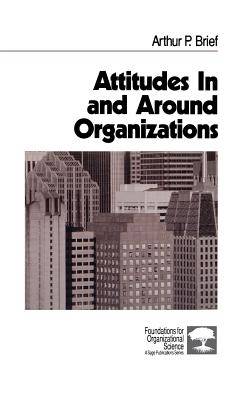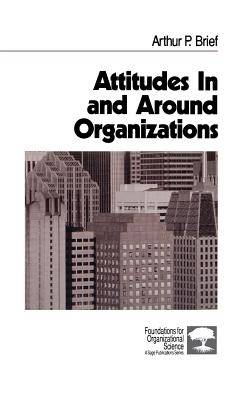
- Afhalen na 1 uur in een winkel met voorraad
- Gratis thuislevering in België vanaf € 30
- Ruim aanbod met 7 miljoen producten
- Afhalen na 1 uur in een winkel met voorraad
- Gratis thuislevering in België vanaf € 30
- Ruim aanbod met 7 miljoen producten
Zoeken
Omschrijving
How do the attitudes people bring with them to the workplaceùattitudinal baggageùaffect thoughts, feelings, and actions in organizations? How are the attitudes of those outside an organization (stockholders, customers, suppliers, government officials, and the public-at-large) affected by the organization? Attitudes In and Around Organizations provides a concise summary of what we know about attitudes and suggests what we might discover by adopting novel means, both conceptual and methodological, for studying attitudes in and around organizations. Arthur P. Brief provides an overview of the job satisfaction literature, including a redefinition of job satisfaction. In addition, he examines the various means by which attitudes have been measured, attitude formation and change, and the resistance of attitudes to change efforts. Groups whose attitudes are organizationally relevant (customers, for example) are examined in order to illustrate how organizations affect the attitudes of people beyond their boundaries and to determine how organizations can influence salient attitudes in their environments. The concluding chapter offers the reader a view of the future and suggests ideas for future research. Students, researchers, consultants, and organizational decision makers will find this a relevant, engaging, and thought-provoking resource.
Specificaties
Betrokkenen
- Auteur(s):
- Uitgeverij:
Inhoud
- Aantal bladzijden:
- 280
- Taal:
- Engels
- Reeks:
- Reeksnummer:
- nr. 9
Eigenschappen
- Productcode (EAN):
- 9780761900962
- Verschijningsdatum:
- 1/06/1998
- Uitvoering:
- Hardcover
- Formaat:
- Genaaid
- Afmetingen:
- 163 mm x 234 mm
- Gewicht:
- 612 g

Alleen bij Standaard Boekhandel
+ 601 punten op je klantenkaart van Standaard Boekhandel
Beoordelingen
We publiceren alleen reviews die voldoen aan de voorwaarden voor reviews. Bekijk onze voorwaarden voor reviews.











